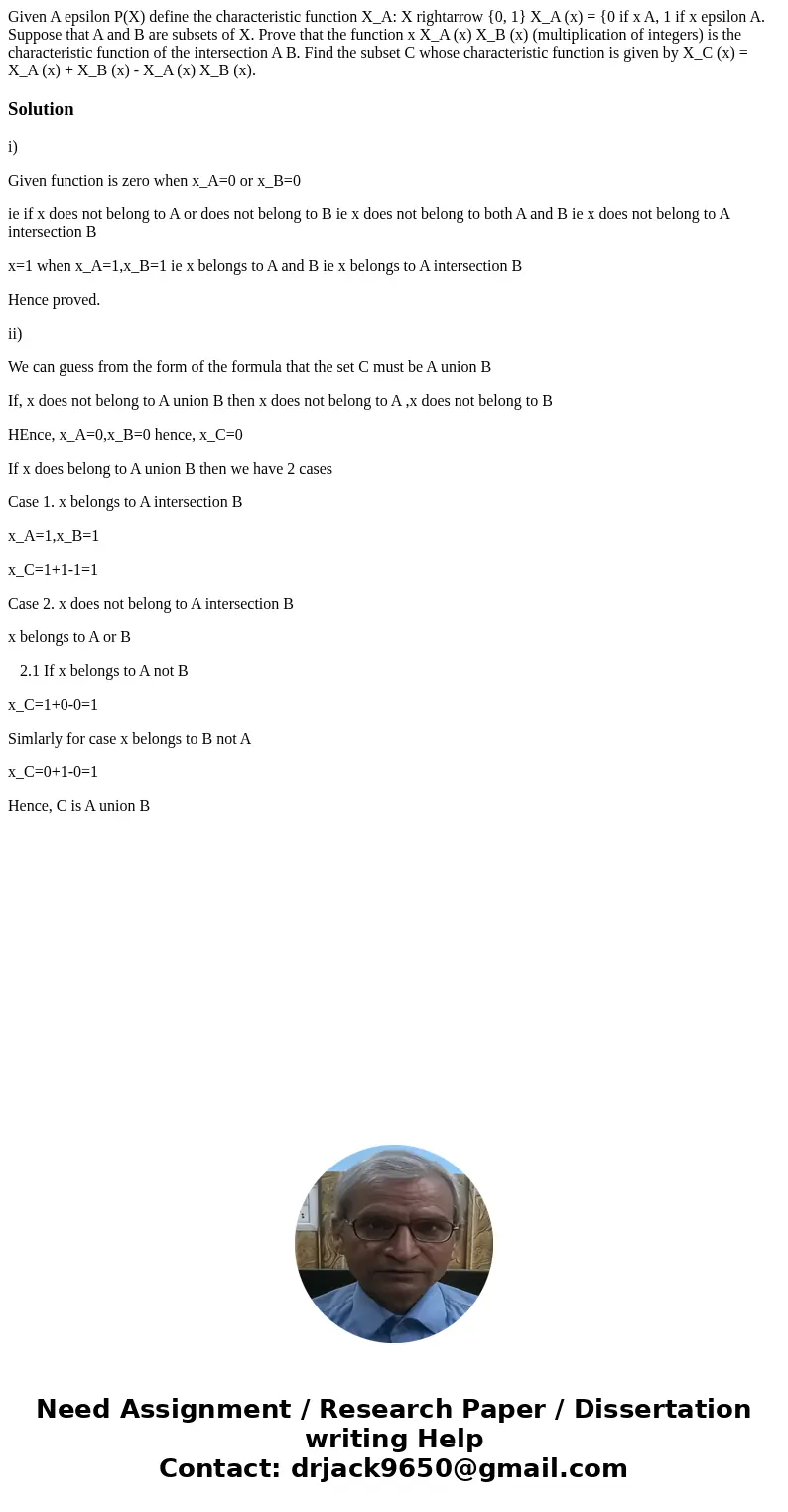Given A epsilon PX define the characteristic function XA X r
Given A epsilon P(X) define the characteristic function X_A: X rightarrow {0, 1} X_A (x) = {0 if x A, 1 if x epsilon A. Suppose that A and B are subsets of X. Prove that the function x X_A (x) X_B (x) (multiplication of integers) is the characteristic function of the intersection A B. Find the subset C whose characteristic function is given by X_C (x) = X_A (x) + X_B (x) - X_A (x) X_B (x).
Solution
i)
Given function is zero when x_A=0 or x_B=0
ie if x does not belong to A or does not belong to B ie x does not belong to both A and B ie x does not belong to A intersection B
x=1 when x_A=1,x_B=1 ie x belongs to A and B ie x belongs to A intersection B
Hence proved.
ii)
We can guess from the form of the formula that the set C must be A union B
If, x does not belong to A union B then x does not belong to A ,x does not belong to B
HEnce, x_A=0,x_B=0 hence, x_C=0
If x does belong to A union B then we have 2 cases
Case 1. x belongs to A intersection B
x_A=1,x_B=1
x_C=1+1-1=1
Case 2. x does not belong to A intersection B
x belongs to A or B
2.1 If x belongs to A not B
x_C=1+0-0=1
Simlarly for case x belongs to B not A
x_C=0+1-0=1
Hence, C is A union B

 Homework Sourse
Homework Sourse